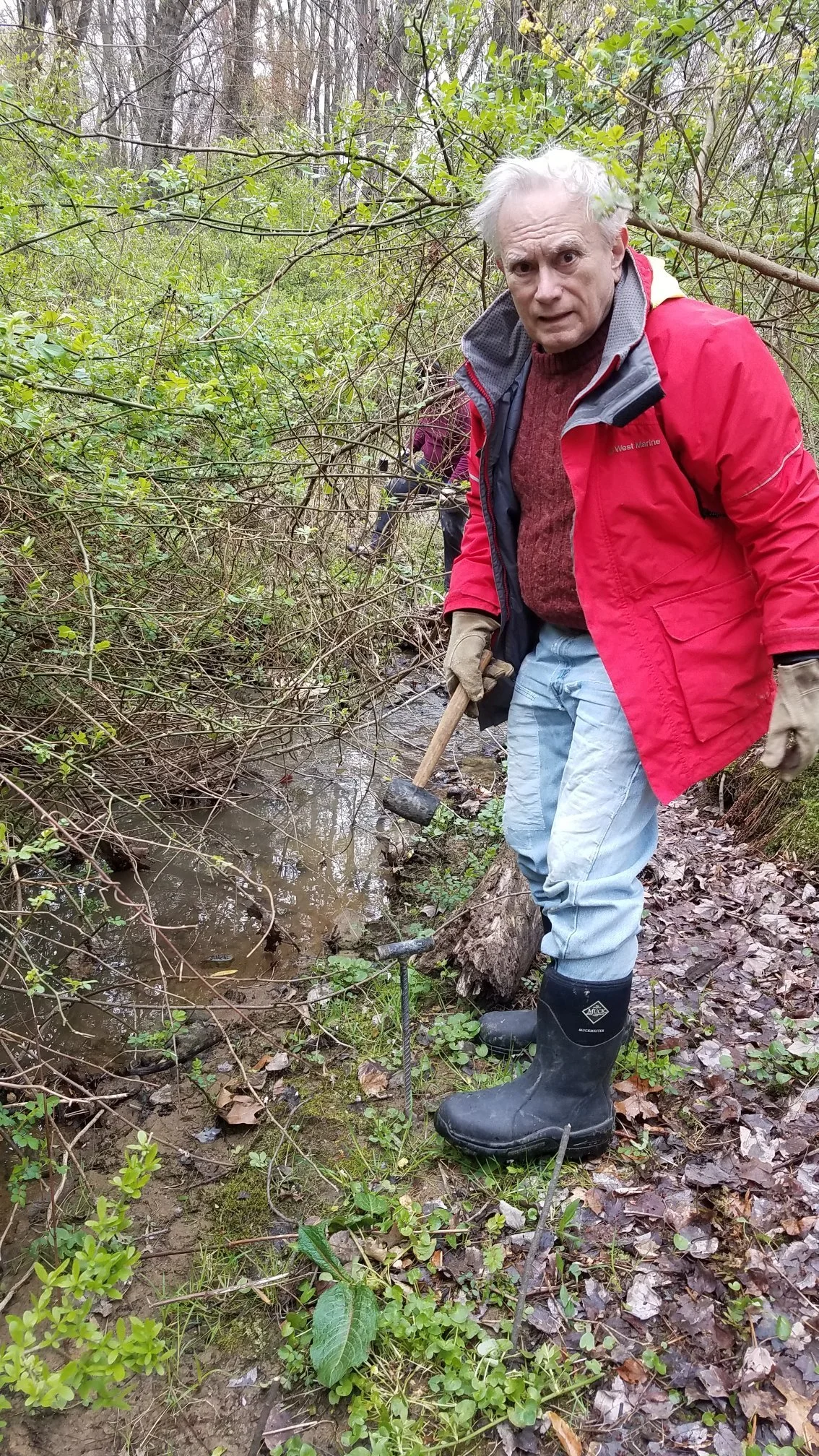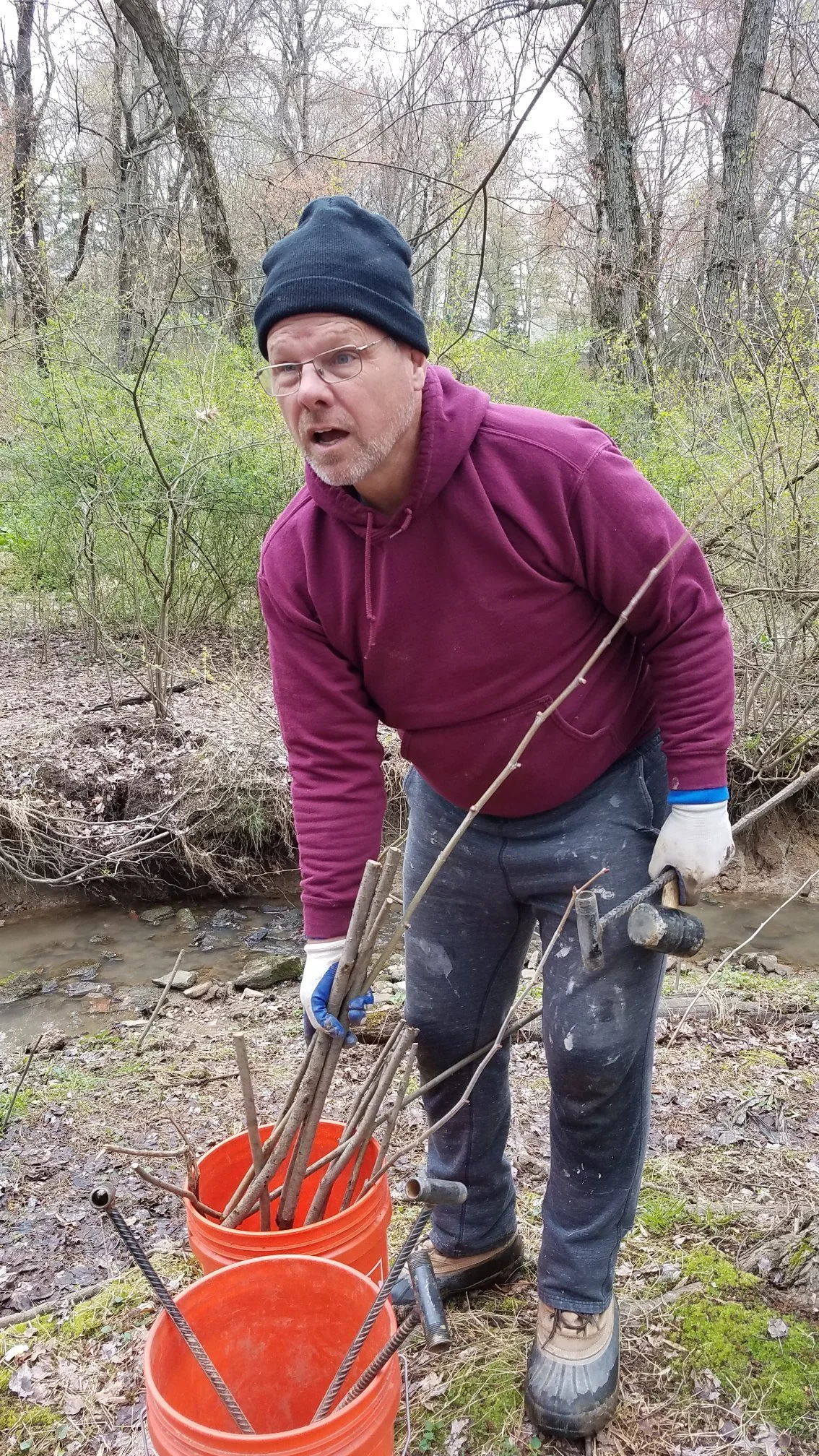Stream Restoration at Southampton Friends Meeting
Southampton Meeting sits on about five acres of mostly wooded land with a small stream running through it. Friends were concerned about this stream, because development, agriculture, and a variety of other disturbances can lead to unhealthy streams because they remove plant life along the banks and increase the flow of water. Stream banks that experience these disturbances are often left bare and without a strong root mass in the soil. Without plants and roots, soil particles are more likely to wash away during high waters, heavy rains, and rapid snow melts. This leads to a variety of undesirable results including sediment pollution in the water, loss of land, and deeply channeled streams.
Wooded view from Southampton Meeting’s worship space
To help combat these disturbances, on April 13th Southampton Friends Meeting hosted a live staking training event that was facilitated by the Master Watershed Stewards (MWS) program of the Penn State Extension Service.
Live staking reintroduces plant life directly in the places that need it most, the stream banks. It has a low cost and is something that landowners can do easily on their own property. Stem cuttings are taken from trees during their dormant season (before the buds break in the spring) and inserted directly into stream banks. These cuttings, referred to as “live stakes,” will eventually grow into new trees and are an effective way to establish a root network in the stream banks and help prevent further soil loss.
On the day of the event, five Friends joined the Master Watershed Stewards and planted about 200 stakes. We all wore muck boots and got into the stream to plant the stakes in about a fifty-yard stretch that is about 2 feet below the surface with undercut banks due to erosion.
In late May, we checked in on the plantings and the results were encouraging. Among the stakes that we could get access to, at least a couple of dozen were leafing out. Among these were American sycamore, Common buttonbush, Black willow, Mulberry and Common buckthorn. We also checked on the 25 trees that we had planted in a wetland patch near the stream in the fall of 2023, and the first 7-8 we checked were alive and healthy! As these plantings had been disturbed by deer early on and had to be re-staked and protected, we were especially happy to see them thriving.
Environmental stewardship is an important value at Southampton Friends, and we were happy to collaborate with the Master Watershed Steward program (Thanks to Ken Jones and Jim Walter) to do our part to improve the health of our little part of the world. For more information on live staking, go to https://extension.psu.edu/live-staking-for-stream-restoration.



